Coilovers vs Lowering Springs: Which is Better?
Undecided on whether lowering springs or coilovers will suit you best? We’ll help you find the perfect suspension setup or your needs.

Introduction
Whether you’re looking to find the final piece of the puzzle on the car of your dreams, or just looking to improve the ride height on your daily driver, lowering can completely transform the looks of your ride.
There are several ways to go about achieving the ideal ride height for your needs, and it can often be challenging to decide between them.
Everyone has different intentions when it comes to suspension. While some owners are happy with simply improving the aesthetics of their car, others will be looking to shave milliseconds off their record lap time at the track.
For those reasons, we’re putting the various choices on the market head-to-head in this guide to ensure that you make the right choice now, instead of regretting it further down the line.
We’re all too familiar with the ‘buy cheap, buy twice’ theory, and we know how frustrating it can be.
You may be thinking that the differences between lowering springs and the other options on the market are minimal. There’s far more to consider than this, especially if handling improvements are high on your list.
Deciding the right aftermarket suspension for your needs can either provide you with either a well-refined, comfortable daily driver or a full-blown race-spec pothole-muncher. Although this type of setup could well be perfect on the track, it’s likely to be terrible on the roads.
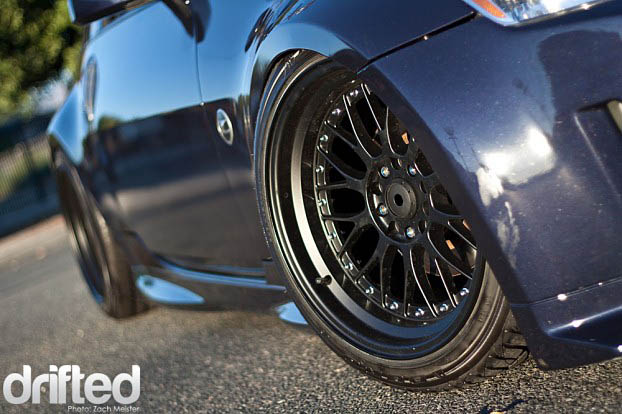
So, the first consideration will need to be what your purpose is for wanting aftermarket suspension.
If you’re looking for the simplest or cheapest option for improving your ride height, and you’re not too worried about handling, then lowering springs can be a consideration.
If you’ve got a decent budget, and you’d like to improve the handling, coilovers are likely to be the perfect answer.
If you’re looking for the most exceptional levels of adjustability and performance for a big-budget car, then the upper-end of the coilover market will be where you’ll need to set your sights.
We understand that a lot of our fans at Drifted are into the stance scene, and airbags/air ride suspension is likely to be the answer here unless you’re brave and willing to head down the static route with coilovers! We’ll also take a look at the positives and negatives of these setups later in this guide.
There’s also a newcomer in the suspension world, which is somewhat of a gamechanger, providing the perfect mix of performance and convenience.
Despite sounding identical to airbags, air cup suspension is capable of providing the handling and performance of coilovers and is undoubtedly the answer to many car owners’ prayers. So, we’ll also take a look at those later in our guide.
For now, we’ll be focusing on the two main suspension choices. So, what are the differences between lowering springs and coilovers?
Although they both serve similar purposes, they do so in a completely different manner, so we’re going to compare them side-by-side to help you make the ultimate choice for your needs.
Prefer watching in video format? We highly recommend this video from Fitment Industries.
Lowering Springs
Lowering springs are often the choice for those of you that are new to modifying cars, as they provide a convenient, cheap way of improving the ride height of your vehicle.
Although many enthusiasts will scoff at the idea of lowering springs, don’t let them tell you otherwise, as there are still benefits.
Sure, you won’t be smashing lap records, but for those of you on a budget, they’re often more than adequate for making vast improvements when it comes to improving the look of your ride.
Lowering springs fit on to the existing suspension setup on your car, and all you’ll do is need to swap out the OEM spring with the lowered one.
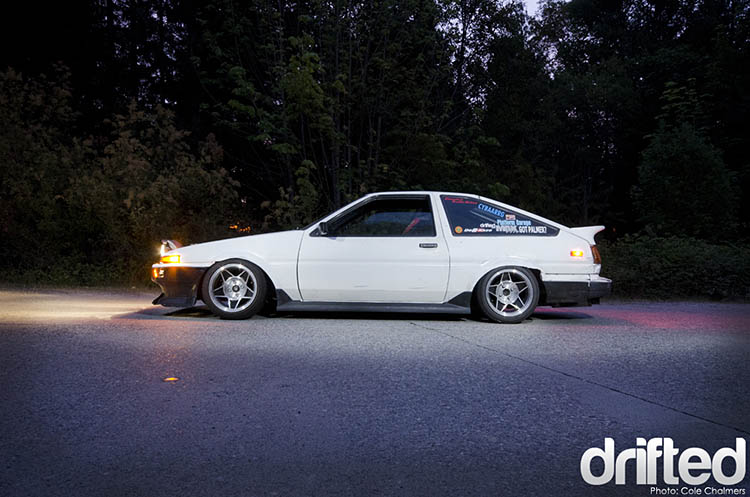
We do recommend getting a shop or an experienced buddy to swap the springs if you’re not qualified – vehicle springs under tension are somewhat terrifying!
When installed, lowering springs are shorter than the stock springs with higher spring rates, which provides a lower stance.
Lowering springs will pull the car’s center of gravity down, which will then improve the body roll, and also the handling and stability, which was most likely lacking with your stock suspension.
Another positive of lowering springs is that they can often retain a stock feel when driving, where most coilover setups are likely to be far more ‘crashy’ on the road, especially if they’re on the budget end of the price range.
If you find your current stock setup too soft, then the chances are that you’ll be able to find firmer springs on the market also, and this is where doing your research will pay off.
Lowering Spring Considerations
You may well be thinking that sounds perfect, and for some of you, that may well meet your targets with what you want to achieve.
However, there are a couple of things that’d we’d consider with lowering springs before you make a choice.
Although budget springs can come with a tempting price tag, this is likely to provide a worse ride than stock, and due to the shorter travel and higher spring rates, it can often offer an uncomfortably harsh ride along with poor handling.
Our experience with springs has shown that you get what you pay for, and we’ve had great experiences with brands like Eibach, which offer an extremely comfortable ride and improved handling.
Ride Height with Lowering Springs
One of the most important things to consider with lowering springs is that once you’ve decided on the ideal spring setup, you’ll have to replace them if you want to change the ride height at a later date.
Although this won’t be an issue for many, if you’re often tweaking and changing your car, the chances are that further down the line, you may want to consider going lower.
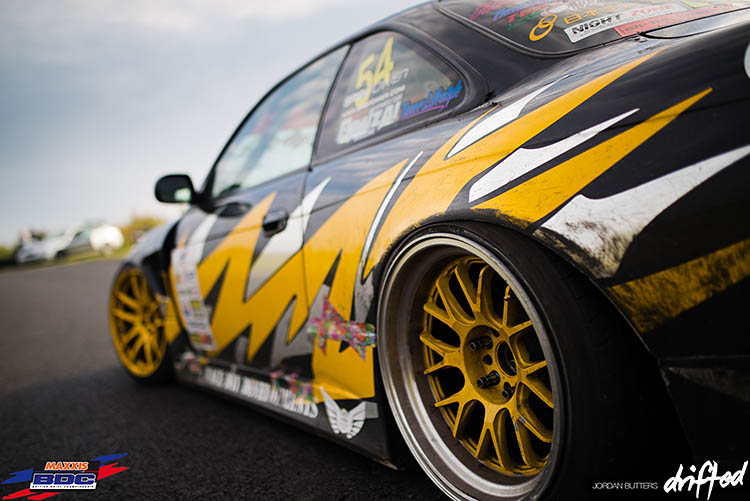
With a coilover setup, all you would need to do is grab your C-spanners and adjust them. But, with a spring set up, then it’s likely to end up being an expensive replacement.
Another thing to consider is that the further down you go with lowering springs, the worse the ride becomes.
Most lowering springs will improve the ride height by around 0.5-3” over the stock setup, and if you’re looking to go further than that, then coilovers should become a consideration.
Progressive Rate vs. Linear Rate Springs
Progressive rate springs are capable of varying with the weight of the vehicle passing through the springs. Therefore, the spring rating will increase, or change, with the compression of the spring.
With a linear rate spring, this will retain the same spring-rate no matter how the weight gets distributed through the spring.
What this means is that progressive rate springs allow for a more comfortable ride. It also reduces body roll when the car being is driven hard under heavy braking, acceleration, or cornering.
The benefits of a linear rate spring are that they’re consistent, and it’s far easier to predict how they’ll react under various scenarios.
Typically, progressive springs would be a better choice for a comfortable daily driver, where linear springs are more refined for a track day, or fast road driving.
Struts and shocks with lowering springs
Given that lowering springs typically use higher spring rates with shorter springs than the OEM equivalent, they’re not always the ideal solution, as they can drastically accelerate the wear on your OEM shocks.
If you’re already experiencing an excessively ‘bouncy’ feel from your worn-out old shocks, the chances are that they’re already on their way out.
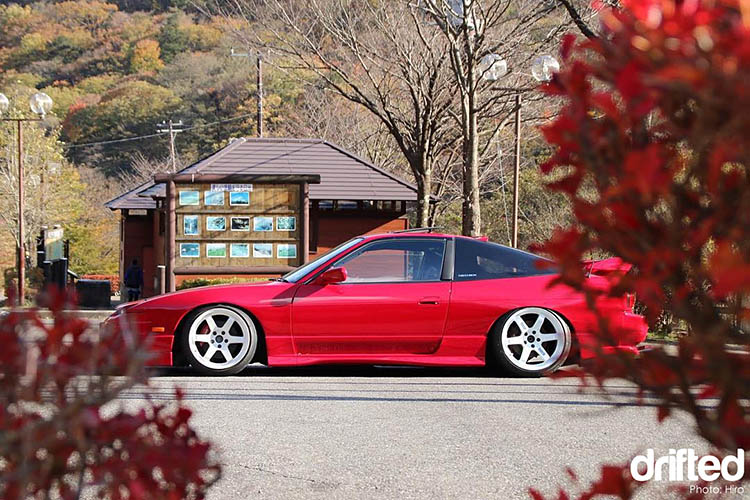
If you fit lowering springs to worn shocks, then it’s likely to feel even worse after you’ve installed them, which can end up being a massive waste of time and money, especially if you’re paying labor for fitting.
One option you have is to go with new, or reasonable condition used OEM shocks to go with your new springs, or you can consider an aftermarket upgrade.
If you want to get the ultimate performance out of your spring setup, then aftermarket shocks and dampers can be a consideration.
Since the price of a decent strut/shock setup with springs is likely to enter coilover territory, this isn’t likely to be a very appealing proposition to the majority.
However, when executed correctly, lowering springs when combined with shocks and dampers can often provide a superior road setup to coilovers.
Chopped Springs
No. Just, no.
We’ve all got that one friend on Facebook who tells us to “Just chop the springs”, and this is the reason Zuckerberg gave as an ‘Unfriend’ button.
Do not ever do this under any circumstances. It’s as dangerous as it is ridiculous.
Coilovers
Coilovers are by far the most popular choice when it comes to aftermarket suspension upgrades, and there’s plenty of reasons why most car enthusiasts would never consider anything else.
Unlike lowering springs, coilovers replace the entire factory strut, leaving you with a simple, straight-swap work of art which can replace your existing factory suspension setup in a matter of minutes.
Once installed, coilovers allow for the maximum levels of refinement, from ride height to dampening, right the way through to significant camber adjustments.
One of the best things with coilovers is that you can adjust these with minimal knowledge and simple tools such as C-spanners, which will come with your new coilovers.
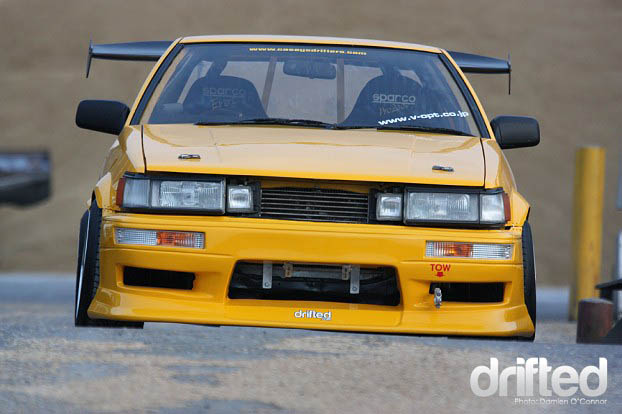
For those of you that are often tweaking the look of your car, this is extremely helpful as it’ll allow for a wide range of adjustments.
Alternatively, if you’re looking for the ultimate racing setup, then you’ll be able to adjust and tweak the coilovers to achieve the perfect alignment.
When it comes to adjustment, lowering springs are ‘Beginner’, and coilovers are ‘Advanced’. Sure, lowering springs are more than sufficient for some needs.
For serious track setups, whether it’s drift, grip, or drag racing, we’re confident that you won’t regret going down the coilover route.
What are coilovers?
Coilover means ‘coil spring over strut’, and although they look similar to a typical strut and spring setup, they’re somewhat unique.
With coilovers, you’re replacing the typical strut and spring combination with a single piece, which thankfully means not having to deal with the terrifying compressed springs.
Unlike a traditional OEM setup, a coilover has a threaded shock body, which allows you to use specific spanners to raise or lower the spring installed to the coilover shock with minimal effort.
Unlike lowering springs, this means if you had the time and patience, you could opt for a completely different ride height every week. Alternatively, if you decided on lowering springs, then you’re stuck at the height you selected upon purchase.
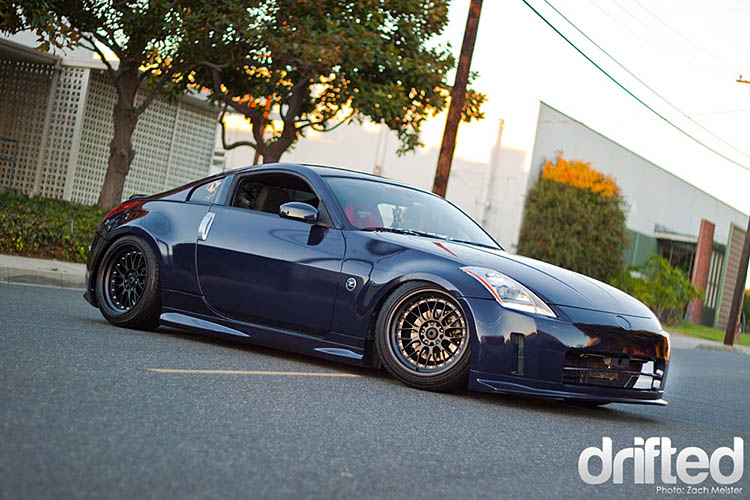
Coilovers will potentially allow you to fine-tune each independent coilover to achieve the ultimate precision when it comes to a wide array of adjustments such as spring pre-load, shock damping, camber, and rebound.
Although coilovers are usually a ‘harsher’ ride, they can vary hugely upon the various manufacturers, with some priding themselves on providing near-stock ride comfort.
Usually, coilovers come with stiffer spring rates than a typical setup, which provides far superior performance, but often comes at the cost of comfort.
In each coilover guide we’ve done, comfort has been one of the main things we consider, so doing your research will pay off here.
You can often purchase various spring rates with some of the superior brands, which will be perfectly refined to your individual needs.
While comfort will be high on the list for daily-driven stance cars, it’ll probably be the least of the priorities when it comes to the purpose-built track cars, where the main focus will be on levels of adjustment.
Fully Adjustable vs. Non-Adjustable Coilovers
Although fully adjustable coilovers are the more expensive option, they’re undoubtedly going to be the better choice for those of you that are serious about your setup.
You’ll often hear about various levels of coilovers, which are referred to as 1-way to 4-way. These are referring to the level of adjustment that you’re able to customize on your coilover setup manually.
1-way dampers typically only allow you to adjust compression or rebound or compression and rebound simultaneously. Although these are usually fine for a basic street setup, they’re not going to be what you want for the track.
2-way dampers provide independent low-speed rebound control and compression, which will allow for superior chassis adjustments.
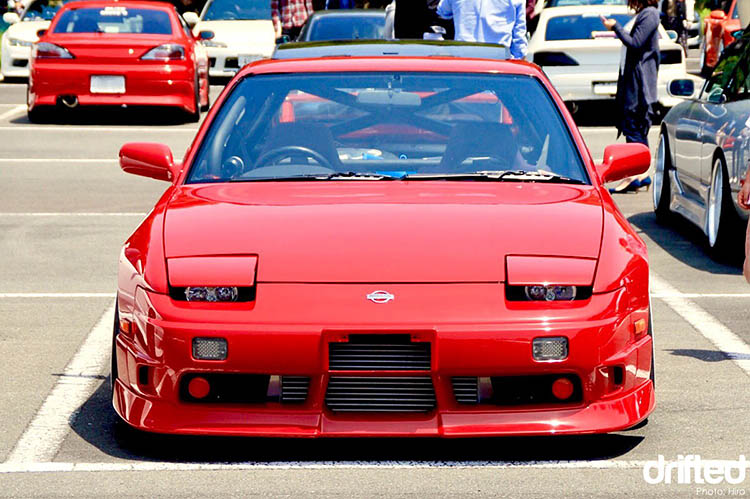
3-way dampers include high-speed rebound adjustment, which is how quickly your car rises when it hits a bump or dip.
4-way dampers are typically the best setup, which includes added compression control.
If 4-way coilovers haven’t been correctly set up, then they can affect the car’s stability when being pushed to the limits. Although we always recommend doing so with coilovers, it’s essential to have these aligned professionally.
Alternatively, non-adjustable coilovers are typically the entry-level alternative for those of you that want the customizable ride-height but haven’t got the budget or need for an adjustable setup.
Although they look near-identical, you won’t be able to carry out any camber, stiffness, rebound or compression adjustments.
The positive of non-adjustable coilovers is that they’re typically ready to go straight out of the box since there’s very little to customize.
These usually come in a similar price range to shocks and springs, but allow for ride height adjustments.
For those of you that are looking for a simple, budget road stance setup and don’t need to worry too much about handling, or specifics like camber adjustment, then these could well be the perfect solution.
For drifting or any other form of motorsports, we would personally go down the adjustable route. You’ll undoubtedly get the most out of an advanced setup, and the ability to tweak anything you’re not happy with further down the line is priceless.
Air Bag/Air Ride Suspension
Although we’d never recommend air ride for a drift car, we have plenty of stance fans here on Drifted that are often inquiring about air ride, so we wanted to explain how it stacks up against lowering springs and coilovers.
Air suspension is a controversial subject, with many (particularly drifters) seeing it as a ‘cheating’ method for achieving an insanely low ride height.
In comparison, low-style drifters typically opt for chassis-scraping ride height settings on their coilovers.
Although air ride also gets a bad rep in the handling department, some of the premium setups on the market are far more refined these days. However, they will certainly set you back a few bucks.
As you may have guessed, air suspension uses air bags that can inflate or deflate at the touch of a button to provide a dramatic alteration to the vehicle’s ride height in a matter of seconds.
Not only is this ideal for enthusiasts that typically have to navigate troublesome roads, but it can also be a blessing when it comes to awkward driveways or parking spaces.
Some of the advanced modern-day air ride setups now feature just about every coilover adjustment feature, such as camber, caster, and dampening.
These modern-day setups are more-or-less the same as coilovers and include an adjustable spring which is capable of inflating or deflating to change the ride height on the flick of a switch.
Air ride does come with its downsides, though. Firstly, there’s the price.
On top of the cost of the already expensive units, you then need a compressor, tank, a management system, and air-lines going to each corner.
The compressor is also heavy, and you’ll have to find somewhere safe to position it in the car.
We’ve also heard of compressor failures, ruptures, and line leaks, to name just a few potential problems. They certainly require far more maintenance than your typical suspension setups.
Although they’re certainly improving with time, we still very much doubt that even the best air ride kits can compete with the best coilover kits on the market when it comes to advanced setups.
It may well be convenient for those of you in the stance scene where ride height is the main focus, but when it comes to maximum performance, coilovers are still king in that department.
This where we find the next idea interesting.
Air Cup Suspension
Air cup suspension is new to the party, and although those of you that don’t know what they are could be thinking they’re probably a gimmick, we believe that they serve a significant purpose.
The beauty of air cups is that they fit on to an existing coilover setup. They provide a pneumatic piston or cylinder, which sits at the top of the coilover spring.
When you flick the switch in the car, the air is pumped into the piston, thus raising the suspension around 2-inches and allowing for additional essential clearance for navigating tricky situations.
If the system isn’t activated, they may as well not be there, and you will experience the perfection that comes with your existing coilover setup.
Another positive is that there’s no ‘bag’ or ‘bladder’ with these systems as they’re just pistons. If they were to fail, you’re back to your traditional coilover setup until you fix the problem.
We know of many drifters that have used them in professional drift cars to great success, from the obscenely low road-driven setups which can’t navigate certain roads to those that just want to get the car on or off their trailer.
Although they might sound perfect, there are once again a few minor drawbacks to consider.
Firstly, you’ll need a tank assembly, compressor unit, and lines. Thankfully, these are quite reasonably priced for what you get but can be inconvenient for serious setups.
Air cup suspension is for ‘getting over’ certain obstacles. Therefore, you couldn’t use this setup for cruising down the highway.
It would enable you to get over a speed bump or onto a steep driveway, for example, before having to lower it again.
Another consideration is that they won’t fit all types of coilovers, so you’ll want to check your dimensions and clearance before purchasing to avoid a costly annoyance upon arrival.
Although it has a few minor drawbacks, we do think that air cup suspension is a fantastic creation. It’s relatively new to the market still, but due to the progression with air ride over the years, it’s already a well-refined system.
Conclusion
Although we went a little off-track with the inclusion of air ride and air cup suspension, we feel that we’ve covered all of the considerations that you’ll potentially need to make when it comes to deciding your next suspension setup.
As you’ve probably noticed, there’s no clear-cut winner, as it all depends on the requirements of each driver.
For some, a cheap spring setup will be sufficient, where others will want the adjustability of a full-blown 4-way coilover setup

There’s no doubt that coilovers provide the best bang-for-your-buck if you have the cash to spare, and they give an incredible array of choices to suit just about every need imaginable.
If you’re serious about tweaking and refining when it comes to lowering your car, and also achieving the perfect setup, then premium coilovers are simply a no-brainer in our mind.
However, for fast road or occasional track use, you may well find a reasonably priced shock and spring setup, which provides a non-adjustable, convenient alternative with no adjustments to have to consider.
We do recommend thinking further down the line, though, and if you’re likely even to want to change your ride height a later date to fit your different-sized wheels, as an example, then shocks and springs aren’t going to be the ideal choice.
Both air ride and air cups have brought a modern-day argument to the age-old springs vs. coilovers question now, though, and they both have their additional benefits if you can deal with their potential drawbacks.
We hope we’ve provided you with some confidence when it comes to making your suspension decisions, and we wish you an awesome future with your shiny new purchase!
Thank you for reading our Coilovers vs Lowering Springs guide.
If you enjoyed this article, then please share it with the buttons at the side and bottom of your screen. If you’ve found this information useful, then please take a moment to share it with other tuning enthusiasts. We appreciate your support.

















